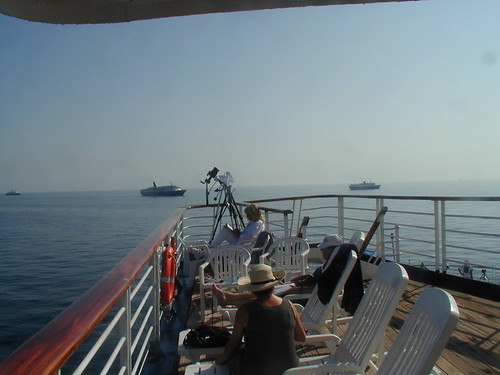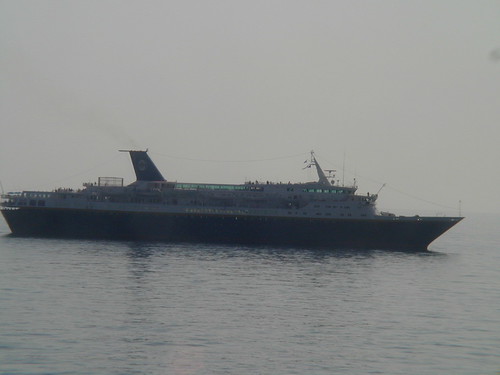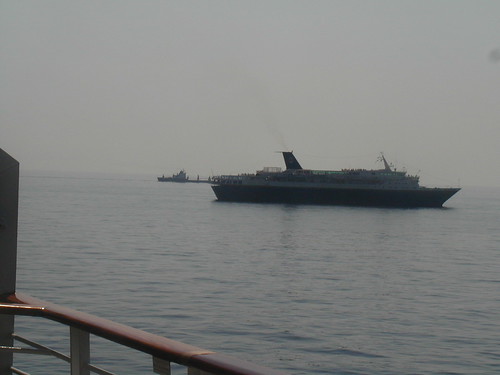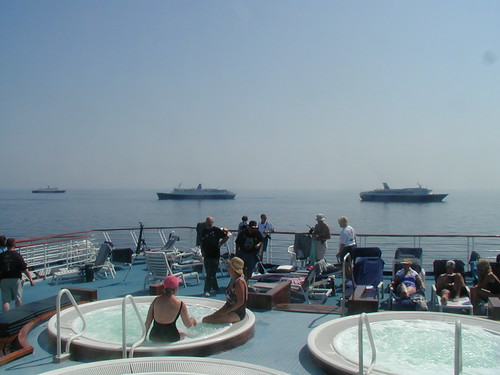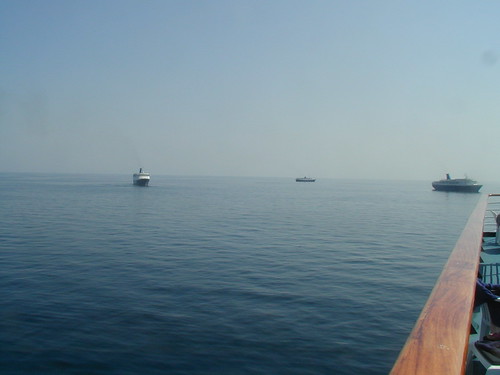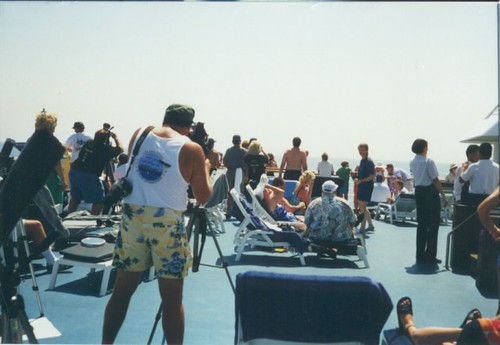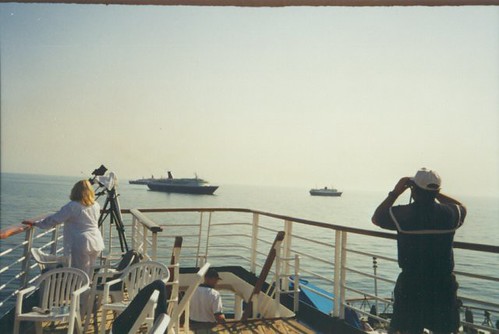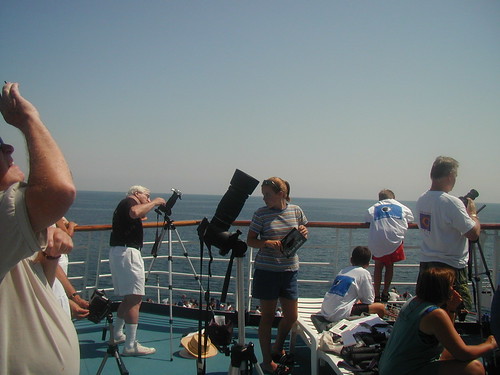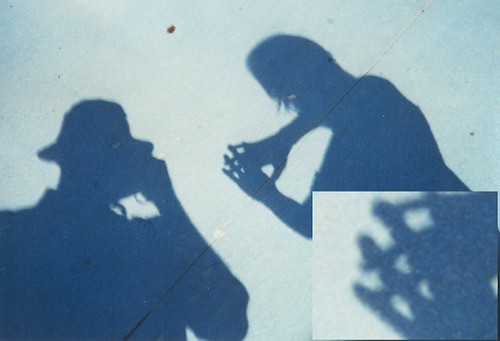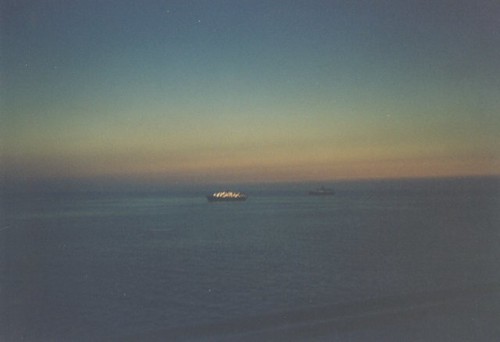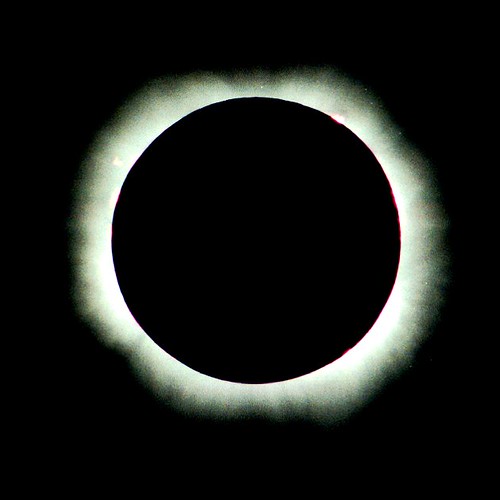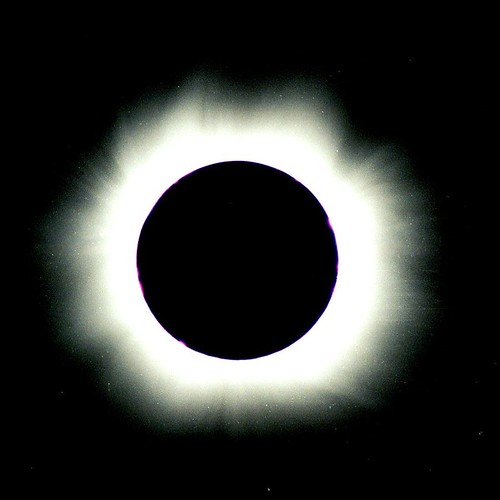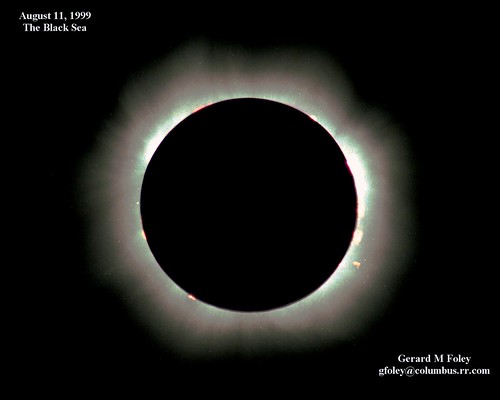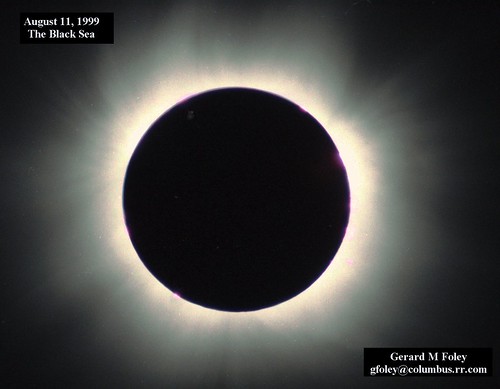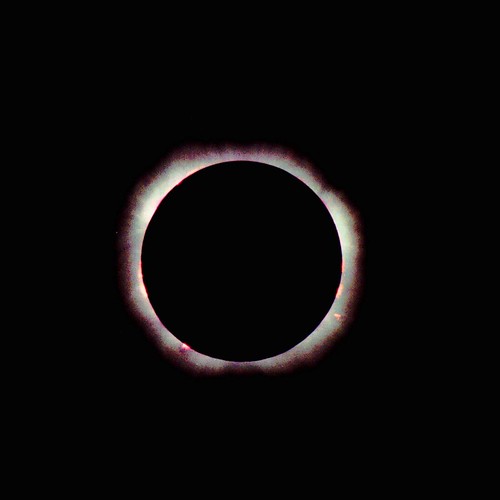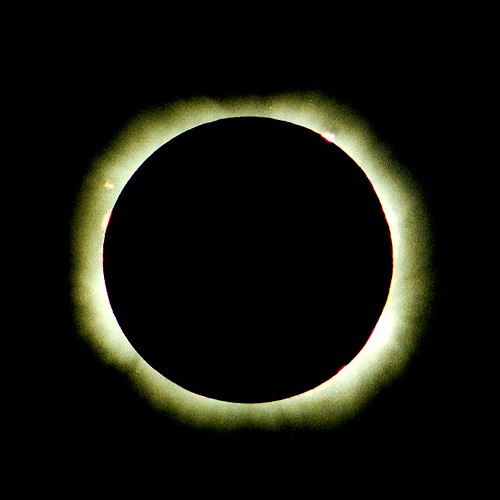Gerard M. Foley
Travel & Photography Collection
Solar Eclipse of August 11, 1999
The eclipse of August 11, 1999 was another great experience. The track of this eclipse began in the Atlantic a few hundred miles east of Boston, MA, swept northeast across the ocean to arch down to Cornwall, across Europe to the Black Sea, Turkey, Iraq, Iran, Pakistan and India, ending in the Bay of Bengal. This was of the same Saros series as the the eclipse of 1963 which we observed in Plessisville, Quebec. Eclipse tracks are highly varied, but all eclipses start in the west at dawn and end in the east at sunset, usually nearly half way around the world from the start. The elevation of the sun and moon at eclipse is highest near the center of the track, near local solar noon. The latter differs from local clock time according to the customs of the location.
We were aboard MV "Marco Polo". Our position on the track in the Black Sea off the coast of Bulgaria (43d06m N 29d41m E at 11:13UT) gave a very high elevation at totality, which lasted a little more than 2 minutes, and was near maximum duration. The weather on eclipse day was nearly perfect, with not a cloud in the sky, and very light haze. The sea was unbelievably calm, almost glassy.
We called at Odessa, Ukrania, the day before eclipse, and then sailed to our eclipse observing position, about 75 nautical miles east of Varna, Bulgaria. Marco Polo was filled with expert eclipse observers, and the word must have got around, for half a dozen or more ships gathered within sight of us.
To photograph the eclipse I used the same Vivitar lens of 800mm focal length with an aperture of f8 (thus the objective is 100 mm or 4 inches diameter), coupled to a Pentax Spotmatic single lens reflex camera as I used at the eclipses of 1970, 1973 and 1998. The film was Kodacolor Gold 800. I did not note the exposures accurately, but they probably ranged from 1/250 to 1/1000 second. The film was processed aboard MV Marco Polo and later scanned with an HP Photosmart scanner.
Photographs are no more than a reminder of an eclipse. Here are six treatments of the scanned negatives of this eclipse, which may give a slight impression of some aspects of the experience.
